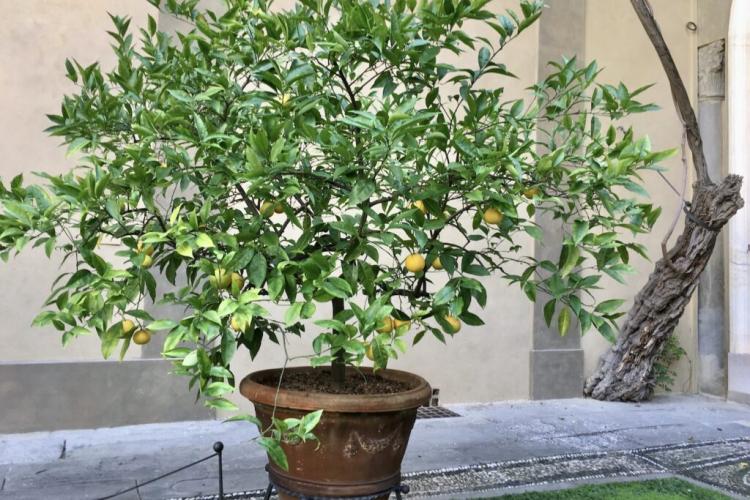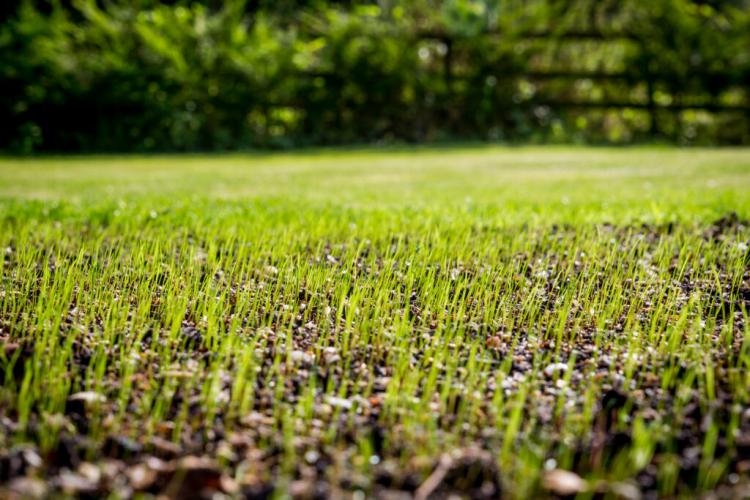Easter cactus: location, care & propagation
The Easter cactus is available in many different colors and, as the name suggests, often blooms in time for Easter. We give tips on how to stimulate flower formation.

With proper care, the Easter cactus will bloom around Easter [Photo: jessicahyde / Shutterstock.com]
Like many cacti, the Easter cactus is quite easy to care for. If the winter break is observed, you can enjoy the colorful flowers in spring. Here we show you what needs to be considered when it comes to maintenance and the choice of location.
Easter cactus: flowering, origin and characteristics
Table of Contents
The Easter cactus ( Hatiora x graeseri ) are hybrids of two species of the Hatiora genus from the cactus family (Cactaceae), namely Hatiora rosea and Hatiora gaertneri . The parents can also be found in stores as Easter cacti. Both species are widespread in southern Brazil and grow there in the higher-lying cloud forests while sitting on trees or other plants. The shoots of the Easter cactus are succulent and divided into flat sections that first appear red and later turn green. With increasing age, the shoots hang over the edge of the pot. The Easter cactus is therefore also a real eye-catcher in the hanging basket. The Easter cactus blooms in spring between March and April. The bell-shaped flowers sit at the end of the shoots and can take on a wide variety of colors – from red to orange and yellow to pink or white. A winter rest phase, in which the flower formation is stimulated, is decisive for the blooming splendor at Easter.

Water can be stored in the shoots [Photo: SOMNATH MAHATA / Shutterstock.com]
The most beautiful species and varieties
In addition to the widespread hybrids, the two parent species Hatiora rosea and Hatiora gaertneri are sometimes referred to as Easter cacti.
- Hatiora rosea : This species has pink flowers, as the name suggests. In Brazil, where Hatiora rosea is native, it is already considered to be at low risk. There the plant grows at altitudes of up to 2000 meters.
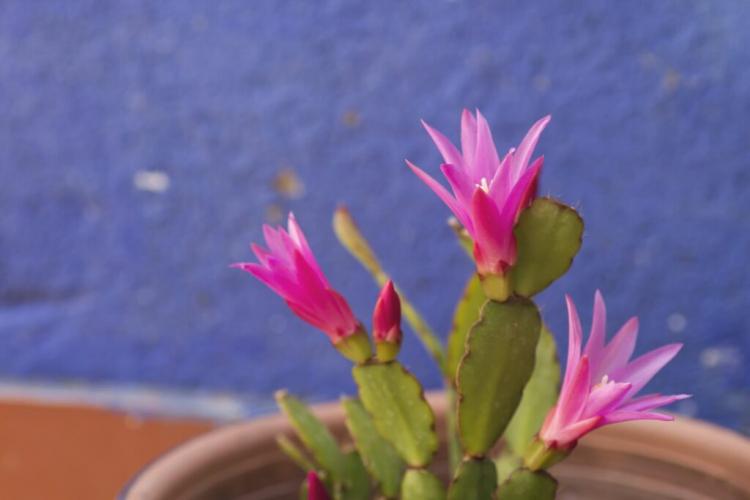
Hatiora rosea has pink flowers [Photo: jessicahyde / Shutterstock.com]
- Hatiora gaertneri : In contrast to Hatiora rosea , Hatiora gaertneri has bright red flowers. The shoots hang down, which is why Easter cacti also look good in traffic light pots. This species is also on the red list and is considered endangered.
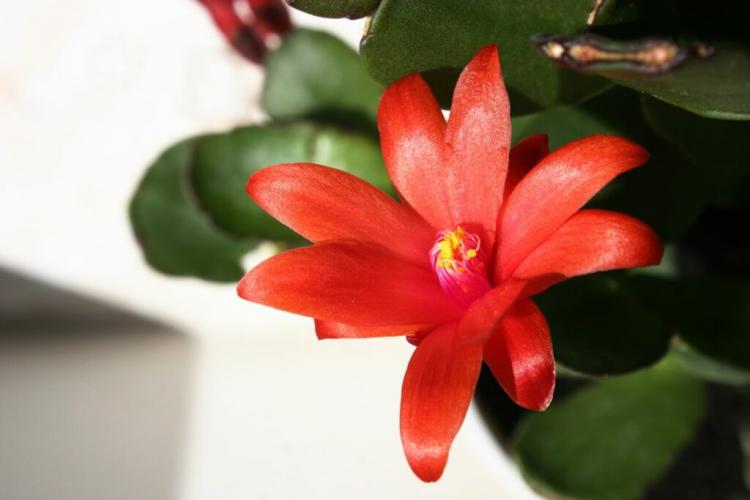
Hatiora gaertneri develops red flowers [Photo: Natalka De / Shutterstock.com]
- Hatiora x graeseri : The hybrids of the two species mentioned above are called Hatiora x graeseri . Most of the commercially available Easter cacti are these hybrids. In addition to red and pink, they are also available in many other colors.
Easter cactus: location, soil and Co.
Choose a location for the Easter cactus that is bright but not full sun. If the sun exposure is too high, the shoots can turn red. In the growing season between March and October, the temperature should be between 16 and 24 ° C. If it doesn’t get colder than 10 ° C even at night in summer, you can easily put the Easter cactus outside. Here, too, a location should be chosen that is protected from the blazing sun. In addition, the Easter cactus needs increased humidity, which can be achieved, for example, by occasional spraying with water.
The Easter cactus also likes it bright in winter, but the temperature must now be lower so that flowers can be created for the coming spring. During the winter months you should give the Easter cactus a break, during which the maintenance measures such as fertilizing and watering are largely stopped and the temperature is lowered to around 10 ° C. After a winter break of about six weeks, the temperature can then be slowly increased to 20 ° C. During this time, the Easter cactus reacts very sensitively to a change of location and it is best not to move or turn it.

Easter cacti come in different colors [Photo: Nick Pecker / Shutterstock.com]
A loose, well-ventilated substrate with a slightly acidic pH value is suitable as a substrate. It is very easy to make a suitable soil yourself. To do this, mix two parts of peat-free potting soil with one part of quartz sand. For the base, it is best to use a high-quality soil such as our Plantura organic potting soil. With its pH value of 6.1 to 6.9, it is in the optimal range for the Easter cactus and contains important nutrients that the Easter cactus needs to grow at first. In addition, the earth is particularly loose and structurally stable due to the expanded clay it contains and does not require any peat.
Tip: A layer of potsherds or stones on the bottom of the pot is very important to avoid waterlogging. Learn how to repot cacti.
Easter cactus care: this is important to note
If you consider a few aspects, the Easter cactus care is not particularly time-consuming. For flower formation, however, he needs a somewhat more special approach. A six to eight week break is important so that the Easter cactus can develop flowers in spring. Even after flowering, another rest period of six weeks is prescribed, during which there is less watering and no fertilization.

The location for the Easter cactus should be bright and warm [Photo: M.Bailey / Shutterstock.com]
Water and fertilize
The Easter cactus neither needs a lot of water, nor does it have a high need for nutrients. It is best to water it in spring and summer as soon as the substrate dries on the surface. Avoid complete drying out of the root ball as well as waterlogging. Excess irrigation water should be removed about ten minutes after the water has been added. Room warm and lime-free water is ideal. You should also spray the Easter cactus regularly with lime-free water, as it needs a slightly higher level of humidity. In winter, watering is a little less frequent, especially when the Easter cactus does not need a lot of water when it is resting at low temperatures. You should therefore only water enough during the resting phase so that the substrate does not dry out completely.
Nutrient intake is only necessary in summer, from April to October. At this time you should give the Easter cactus about every three weeks a green plant fertilizer in half the concentration. For example, our Plantura organic indoor & green plant fertilizer is suitable, which you can simply mix into the irrigation water. In addition to important nutritional elements, our mainly organic fertilizer also contains microorganisms that promote root growth. Its production saves resources and thus also our environment.
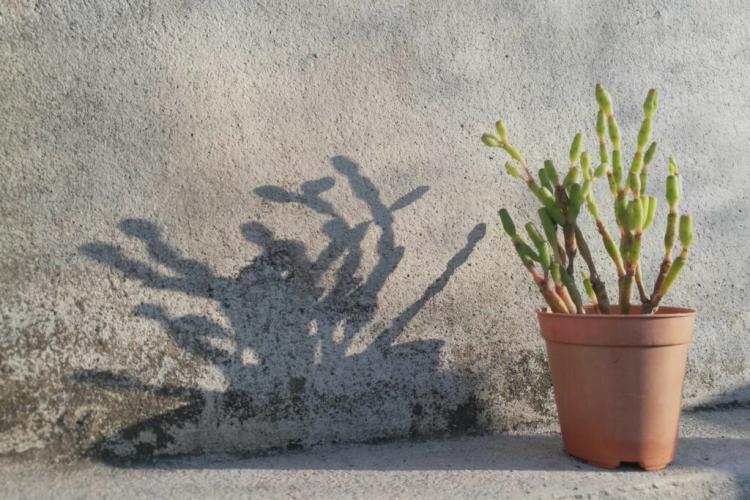
In summer the Easter cactus can also be put outside [Photo: panattar / Shutterstock.com]
Cut the Easter cactus
There is no need to cut the Easter cactus. However, if it has gotten too big, you can cut off individual shoots at the desired location with a sharp knife. These are also useful for propagating the Easter cactus. The cut should be made after the flowering time so that the flowering is not impaired.
Repot the Easter cactus
If the old pot has become too tight, you should repot the Easter cactus. This is also best done after the flowering period. Place a drainage layer made of potsherds, gravel or expanded clay on the bottom of the pot and plant the Easter cactus in a suitable, well-drained substrate. Usually repotting is necessary every two to three years. In the meantime it is sufficient to remove only the upper substrate layer and fill it with new soil.

The resting phase in winter is important for flower formation [Photo: Lapina / Shutterstock.com]
The Easter cactus does not bloom: what can be done?
Is your Easter cactus not blooming? This can be due to the following reasons:
- Missing resting phase : The most common reason for a lack of flowering is probably incorrect wintering. The Easter cactus needs a light, but cool place with temperatures of around 10 ° C to plant the flower buds. The rest phase should last four to eight weeks and the location should not be changed during this time. When the first buds appear, you can slowly increase the temperature.
- Incorrect care: Even if the hibernation is very important for flower formation, it can still happen that the Easter cactus does not flower due to lack of nutrients or insufficient space. Therefore, check that the pot is big enough and that the substrate is not too wet. During the growth phase, the Easter cactus also needs regular nutrients.
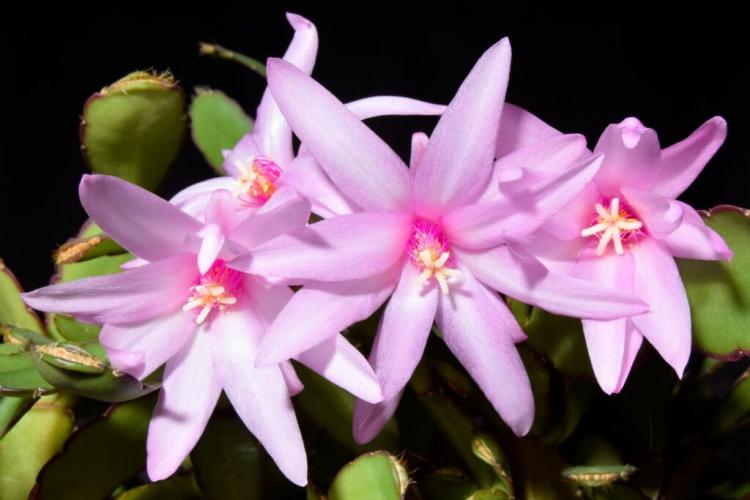
The flowers can be hand-pollinated in order to obtain seeds later [Photo: WitoldS / Shutterstock.com]
Propagate Easter cactus
To propagate the Easter cactus, you can use cuttings or seeds.
Cuttings: Use a sharp knife to cut a 10 cm long shoot from the plant. Let it air dry for three days and insert it with the cut into the substrate. A mixture of two parts of potting soil and one part of quartz sand is well suited. Moisten the soil and choose a light and warm place for the cutting. Temperatures of around 23 ° C are ideal. Roots are formed after about four weeks.
Seeds: Propagation via seeds is also possible. To do this, the Easter cactus flowers must be pollinated. Pollination can be done by hand with a brush or by self-pollinating individual flowers. After fruits have formed, the seeds can be loosened and distributed on moist substrate. Covering with cling film ensures higher humidity and accelerates growth. Germination takes place in a light and warm location after about three weeks.
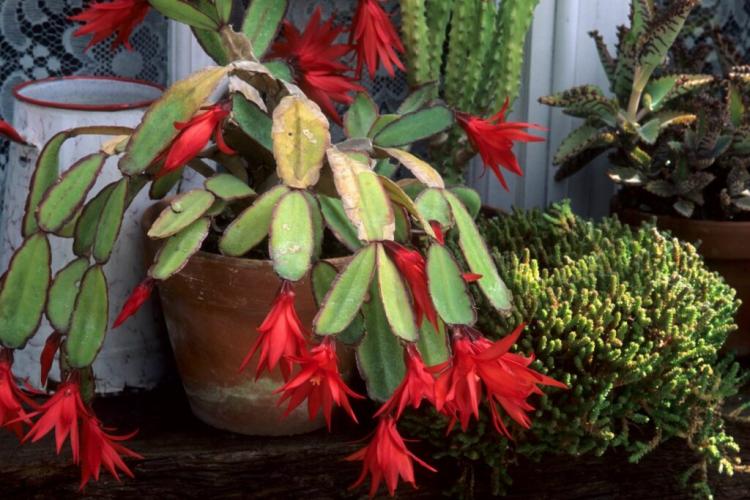
The shoots can be cut off and used for propagation [Photo: COULANGES / Shutterstock.com]
Is the Easter Cactus Poisonous?
The Easter cactus is not poisonous and can therefore be placed in any suitable place in the home. Even if it’s outside in the summer, you don’t have to worry.
The Christmas cactus looks very similar to the Easter cactus. However, as the name suggests, its flowering takes place at a different time. Here you can find out how you can stimulate the flower formation of the Christmas cactus.


